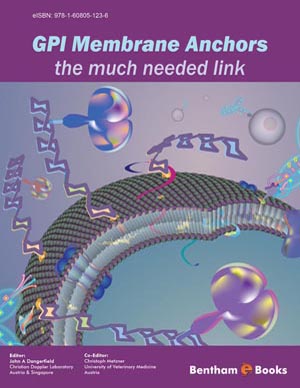Abstract
Glycosylphosphatidylinositol (GPI)-anchored proteins are comprised of a relatively large hydrophilic moiety tethered to a membrane by a relatively small lipid tail. The functional role of the anchor is not clearly established, and proposals range from cell motility to cell signaling. Together with gangliosides and cholesterol, GPI-anchored proteins form membrane microdomains called lipid rafts in the outer leaflet of the plasma membrane that are involved in the regulation and modulation of numerous cellular processes.
GPI-anchored proteins can be actively shed from the membrane of one cell and taken up by other cells by insertion of their lipid anchors into the cell membrane. There are physiological processes where trans-cellular mobility of GPI-anchored proteins occurs. This process appears to be regulated, and most probably involves catalytic activity of some proteins that still have to be identified (GPI-specific phospholipases). Tumor cells and some pathogens apparently misuse this process for their own advantage, but its real physiological functions remain to be discovered. Special attention should be given when using detergents for biochemical and immunohistochemical methods in analysis of these molecules because of probable artifacts.






















